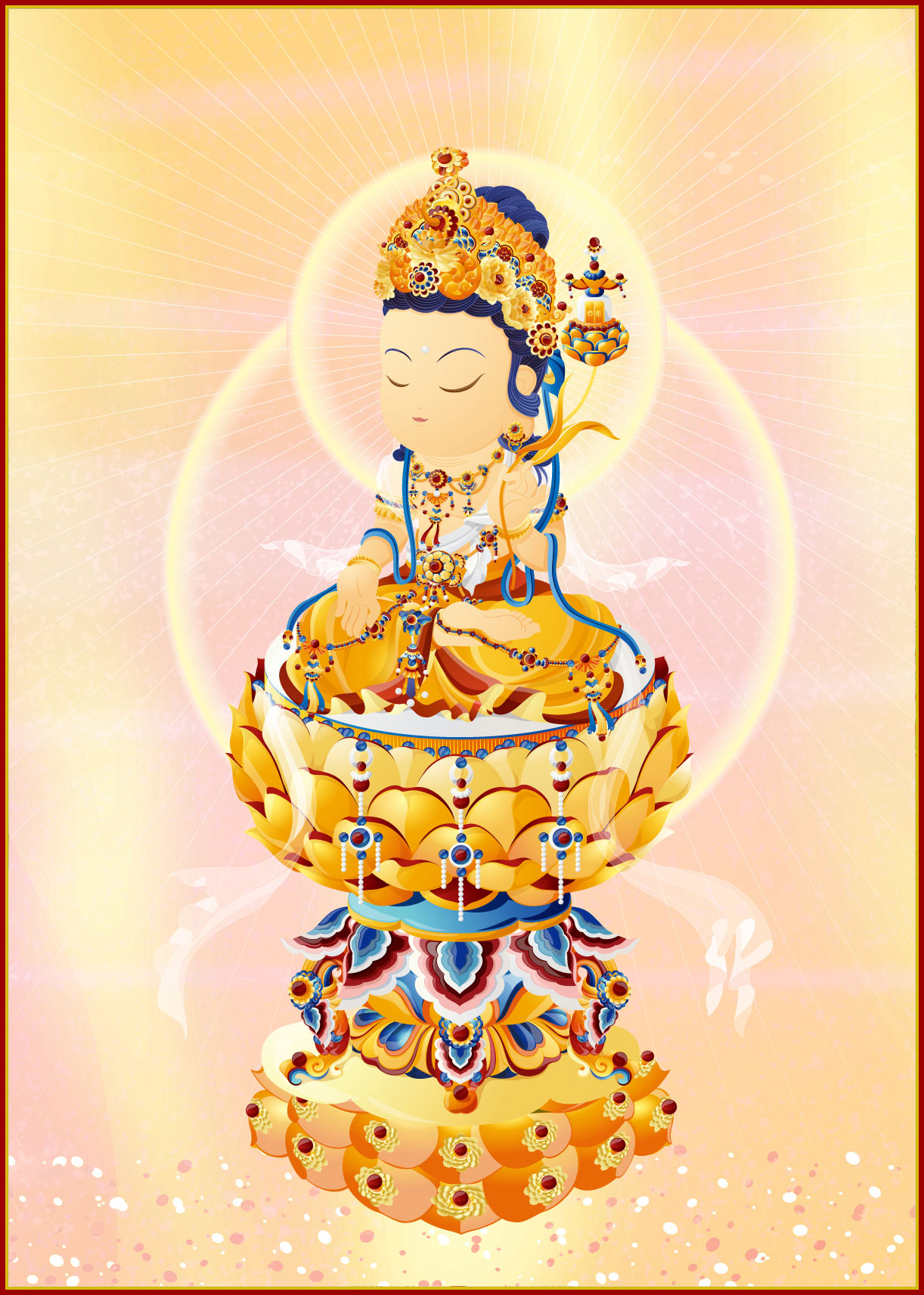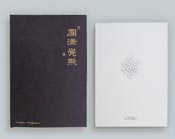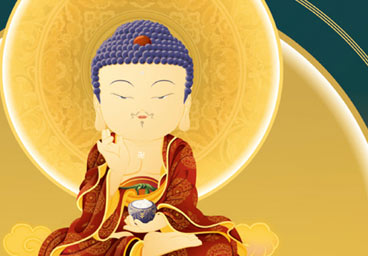Maitreya/彌勒菩薩
According to Buddhist tradition, Maitreya is a bodhisattva who will appear on Earth in the future, achieve complete enlightenment, and teach the pure dharma.

Maitreya is typically pictured seated, with either both feet on the ground or crossed at the ankles, on a throne, waiting for his time. He is dressed in the clothes of either a bhikṣu or Indian royalty. As a bodhisattva, he would usually be standing and dressed in jewels. Usually he wears a small stupa in his headdress that represents the stupa with relics of Gautama Buddha to help him identify it when his turn comes to lay claim to his succession and can be holding a dharmachakra resting on a lotus. A khata is always tied around his waist as a girdle.
Maitreya's Tuṣita Heaven
Maitreya currently resides in the Tuṣita Heaven (Pāli: Tusita), said to be reachable through meditation. Gautama Buddha also lived here before he was born into the world as all bodhisattvas live in the Tuṣita Heaven before they descend to the human realm to become Buddhas. Although all bodhisattvas are destined to become Buddhas, the concept of a bodhisattva differs greatly in Theravada and Mahayana Buddhism. In Theravada Buddhism, a bodhisattva is one who is striving for full enlightenment (Arahantship in Pali), whereas in Mahayana Buddhism, a bodhisattva is one who has already reached a very advanced state of grace or enlightenment but holds back from entering nirvana so that he may help others.







